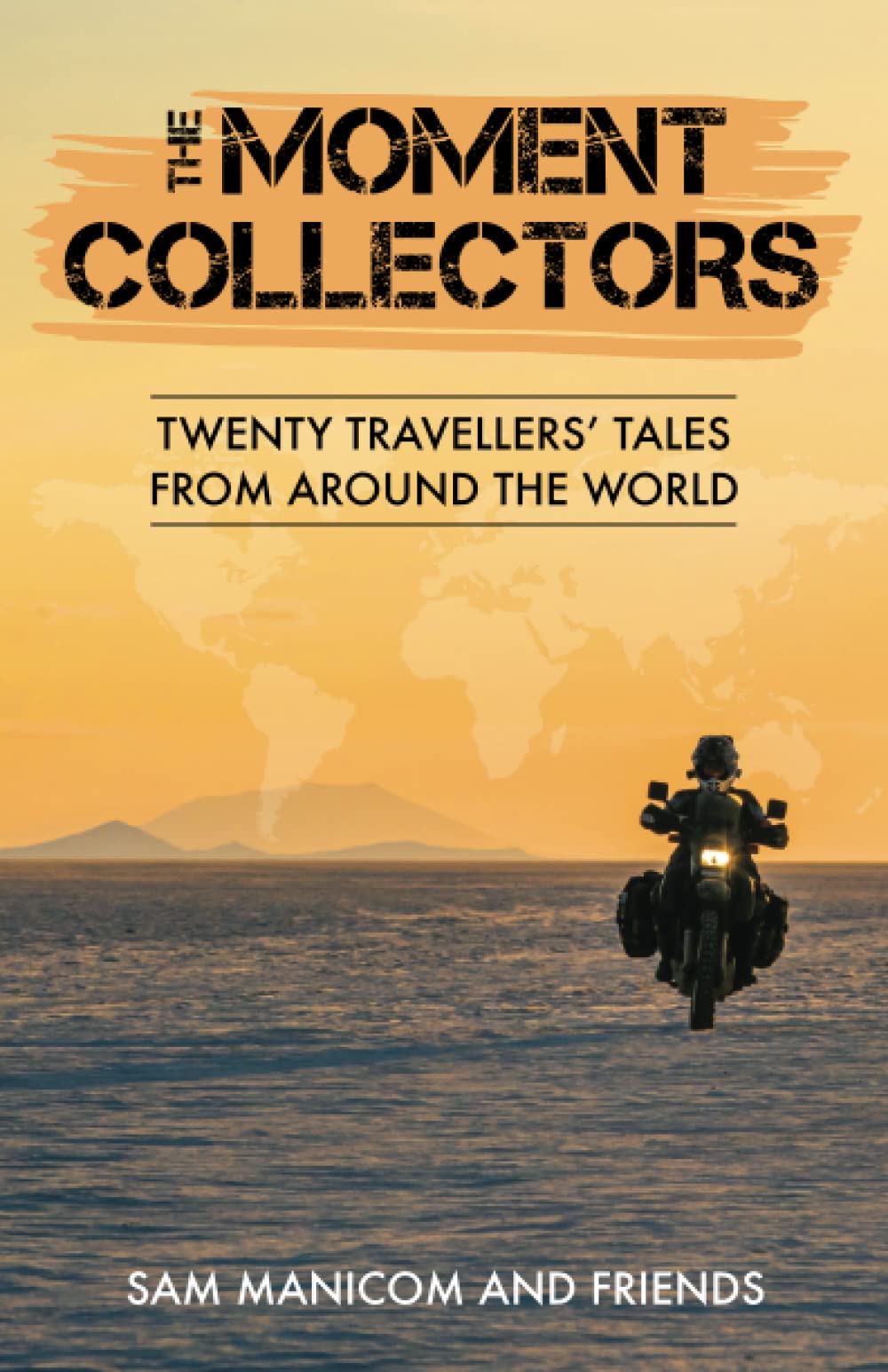By MarisaFor the past few weeks, Tim and I have been making preparations to ship our motorcycle and ourselves to South Africa from the US. The plan is to then ride up the eastern side of Africa up to Egypt, and from there, ferry over to Europe. We recently shipped our bike from Argentina to the States, and that process was fairly painless, but shipping to Africa has turned out to be a completely other beast. That is not to say that Africa won't be worth all the trouble. I think the moment we take our first picture with our bike and a giraffe standing behind it, all these difficulties will feel a million miles behind us. For various reasons, we've decided to ship our own bike to Africa as opposed to buying one there. Both methods require Carnets (depending on which countries you go to), and are complicated in their own way, but buying a bike there would certainly avoid the whole “shipping over" part. Yet we felt it was important for us to ride on our own trusty steed that we have put so much love and work into, and I think in the end this was the right decision for us. But the process has not been easy. So to help anyone out there who wants to one day overland in Africa with a vehicle brought from home, I'm going to lay out everything I've learned about doing so. If that's not you, the following information may not be of interest, but stay tuned for our next blog post because it will be from South Africa, hopefully with a motorcycle all in one piece! What is a Carnet de Passage?Unlike riding through the Americas or Europe, there are many countries in Africa that will not allow you to enter with your vehicle if you don't have a special and expensive piece of paperwork called a Carnet de Passage en Douane (yes, it's French). It's known as simply a Carnet (kar-NAY) or CPD for short. Think of it like a passport for your vehicle, and you have to get it from your country of residence's automotive association before you hit the road. And the kicker: you'll have to pay them a several thousand dollar deposit that equals the worth of your vehicle (plus a $980 fee for processing the paperwork). Once you're all done with your Carnet with every border stamp in its proper place, you'll get your deposit back. Fingers crossed. The way I look at it is the Carnet is an antiquated assurance that you won't sell your vehicle while abroad. Nowadays, most countries simply register your vehicle's VIN number upon entry and exit, and they give you a paper called a Temporary Import Permit. But before computerized systems, borders couldn't easily keep track of everyone coming and going, and so they relied on Carnets which proved to them that you wouldn't sell your vehicle or else you'd lose your deposit on it. Though many countries will accept a Carnet, most don't require it anymore. Currently, only some countries in Africa and Asia require a Carnet for vehicle entry, including Egypt, Libya, Iran, India, and Pakistan, though the rules are always changing and becoming more and more lax. Check out this great website (overlandingassociation.org) for the latest information. So how do you get a Carnet? The following is the complete step-by-step process of how we prepared ourselves and our motorcycle to arrive in the continent of Africa, Carnet, plane tickets, and all. Step 1 - Apply for your CarnetAs of 2019, the only organization giving out Carnets in the States and Canada is called Boomerang, and it's located in Illinois (it used to be in Canada under a different name and changed to Boomerang just this year). To get the Carnet, first go to their website and fill out their inquiry form, and they'll guide you through the process from there. Make sure you're on their vehicle passport page, not their freight and goods site which looks similar. If you're from the US and Canada, use this link. Afterwards, you'll have to send them scanned copies of your vehicle registration, your passport, two passport-sized photos of you, two pictures of your vehicle from the front right and rear left, and a signed and completed application form. You'll have to know mileage, weight, dimensions, and all the countries you plan on going to. This is very important: your Carnet is only valid for ONE YEAR from the date of printing, which means you must be through all the countries that require it within that year. There are ways to extend it, but it will cost you $400 and you have to start the extension process months in advance. So I suggest that after you do all the paperwork and payments, tell your Carnet company NOT to print your Carnet until you're ready to leave. Step 2 - Research How You'll Ship Your VehicleIf you have a car, RV, or anything bigger than a motorcycle, you will have to use ground or sea shipping to get it to Africa. But one of the great things about traveling by motorcycle is that you can fly your bike pretty much anywhere in the world these days. And because we've heard horror stories of people waiting for months and paying exorbitant fees when shipping their bikes by sea, we decided to fly. We had just flown our bike from Argentina to Chicago with relative ease, so we figured that the process would be similar for Africa. Ha! Not exactly. Most cargo companies will only deal with freight forwarders, not ordinary people, so choose one to go with. We went through MotoFrieght. If you have a motorcycle, I would still recommend flying instead of shipping to Africa, but the price was way higher to get our bike to South Africa than from South America, about 3 times as much! AirCanada has the best deals for motorcycles flying out of North America, but they don't fly to Sub-Saharan Africa (and be aware that they only fly motorcycles from May 1st to September 30th), and so paying a customs official to transfer the bike in Europe to get it to Cape Town was an extra expense. Step 3 - Research Cheap Flights for YouYou must book your bike's flight no less than two weeks prior to departure, so plan ahead. And before booking anything, we researched the cheapest days to fly ourselves to South Africa because passenger fares differ day by day, but your motorcycle will cost the same ridiculous price regardless of the day. Once you have a few good dates in mind for yourself to fly, then you can confirm with your freight forwarder to ship your bike on the same day. Don't book your personal flight before talking with them first because they will tell you which dates work for them and which days have no availability. Step 4 - Finalize Your CarnetNow that you have a good idea of when exactly you want to leave, you can tell your Carnet company to print and finalize it. Since the Carnet is only good for one year from the date of printing, you want that date to be as close to your departure as possible, but you'll also need your Carnet printed before booking any shipment of your vehicle. So once you're ready, have them print your Carnet and you will receive it in the mail next day air. The actual Carnet is a big yellow form with a packet inside, and every Carnet country you go to must fill out one of these sheets (it's very important you make sure it's exact). They will stamp in your vehicle upon entry and exit, and you must have all your stamps and signatures in order or else there is a chance you will not get your deposit back at the end. You will also receive two more important documents, the Certificate of Disposition (COD) and the Certificate of Location (COL), and at the end you'll use one of these along with your Carnet to get your deposit back. If you'll be returning to your home country with your vehicle, have the customs officer fill out the COD for you (this is for the US only, I know it's different for other countries). If you won't be coming back home with your vehicle, you'll simply have an official in whichever country you're at fill out the COL instead of the COD, which basically just proves you are no longer in a Carnet country. Whew, that's complicated! It took us a long time and several phone calls to figure this all out. When you've gotten through your last Carnet country (for us it will be Egypt), or you've come home, then you will mail a copy of the Carnet and either your completed COD or COL (depending on whether you're in your home country or not) and await instructions on receiving your deposit. They will most likely make a money transfer into your bank account, or by whichever means you want. Obviously, Carnets are no fun and require a lot of stress and money. But for us and many others out there, the elephants and lions of the serengeti are worth it. Step 5 - Book your Vehicle Shipment, then your own FlightEverything should be done in this specific order: finalize your Carnet first, book your vehicle shipment second, and last of all, book your own flight. This is because your freight company will need your Carnet number before booking, and they may not be able to ship on certain days. You can't leave until your vehicle does, so you must book your personal flight after you are 100% sure about the date and time that your vehicle will leave. Though motorcycles do fly in the cargo area of regular airlines, you don't need to fly on the same plane as your bike, and you don't even need to use the same airlines (AirCanada will give you a discount if you do though). That being said, you need to align your flight to take place just after dropping off your bike and hopefully you'll be at your destination before it arrives, otherwise you will be charged daily storage fees. Step 6 - Crate it up!Prior to your motorcycle's flight, you will need to set up a DG Declaration (Dangerous Goods Declaration) to certify that the motorcycle is in safe condition for air transport. We arranged for this to be done the morning of the motorcycle's flight because it does not ship out until 9pm, but just be sure the inspection has been completed in time for customs to do their job, between 24 and 6 hours prior to takeoff. After you have obtained your DG Declaration, you can show up at the cargo place for customs. Here were the rules for flying our motorcycle:
To get the bike ready to ship, you will most likely have to take off your windshield, bend in or remove your side mirrors, and disconnect your battery. You can usually leave your helmet and boots in a pannier. Everything will be shrink-wrapped, and only the owner of the motorcycle is allowed into the customs area of the airport (last time, I was forced to wait outside for hours as Tim did everything). You will pay at the time of shipment, probably via credit card, and then that's it. Cross your fingers and toes and get ready to fly out and meet your bike at its destination! So that's the process, nothing complicated at all, right?
My next blog post will be from South Africa, and hopefully I'll have some good news about arriving safely and retrieving our motorcycle with no problems. So wish us luck (we're leaving September 9th), and stay tuned for the first part of our adventure in Africa! |
Follow UsRide with us from Chicago to Panama!
2Up and Overloaded Get inspired by the tale that started it all:
Maiden Voyage 20 author's tales of exploring the world!
The Moment Collectors Help us get 40 miles further down the road with a gallon of gas!
Become a Patron for early access to our YouTube Videos!
Subscribe to our YouTube Channel!
Subscribe to our Blog by Email
|
2Up and Overloaded
Join our clan of like-minded adventurers...
Proudly powered by Weebly
Designed by Marisa Notier






























